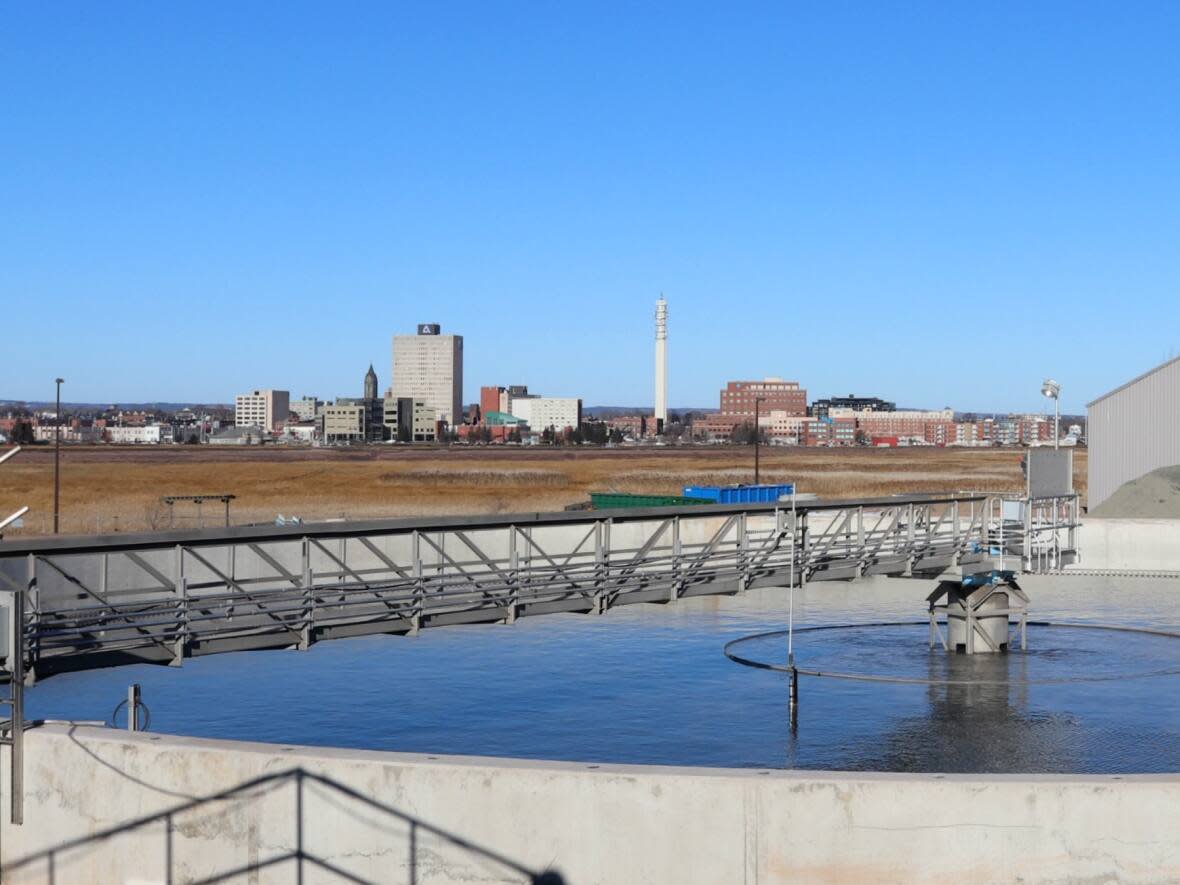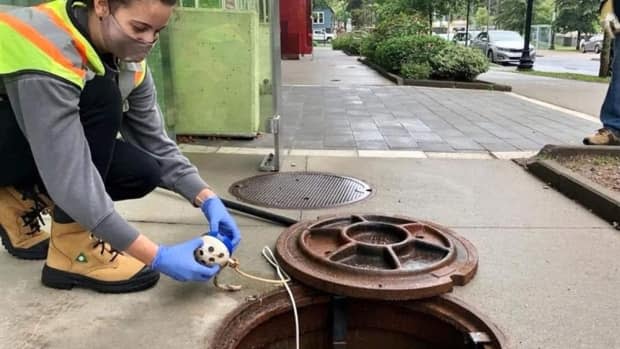Moncton wastewater testing helps track more accurate look at COVID-19 spread

As New Brunswick scales back on widespread PCR testing, wastewater surveillance in the province's largest city is helping to provide a clearer picture of COVID-19 transmission.
The City of Moncton has been collecting wastewater samples since fall 2020, primarily from three zones, to monitor for viral signals. They are analyzed by Dalhousie University in Halifax, and the data is shared directly with public health officials.
Nicole Taylor, director of water and wastewater, said wastewater testing has become a useful tool for projecting trends in cases.
"It gives a general idea of the extent of COVID in the community," she said. "It gives an indication of what is coming."
With the Omicron variant overwhelming testing capacity, municipalities across Canada have been turning to wastewater surveillance as a way to help determine how many people are infected. It's being used as a strategy to detect COVID-19 trends up to a week earlier.
In some provinces, the technique has been used to monitor and detect outbreaks at prisons, long-term care homes and university residences.
WATCH / A look at how Moncton is tracking COVID-19 trends
Researchers in Halifax detected Omicron in wastewater in November, weeks before the variant was officially confirmed in Nova Scotia. Testing in Moncton is not variant specific.
Taylor said results have shown the virus was present when Public Health was reporting no confirmed active cases in the Moncton region.

"When you get a peak like that it raises a lot of questions — is it asymptomatic, is it pre-symptomatic, is it people driving through Moncton," she said.
The City of Moncton won't release the results or identify which neighbourhoods have been tested. It also collects samples from the wastewater treatment plant in Riverview.
How it works
People who are infected with COVID-19 shed the virus that causes the disease into their waste.
It is released in the form of RNA for several weeks and begins shedding, even before symptoms begin.
This genetic material allows for wastewater testing to detect the presence of asymptomatic cases and monitor trends before people become infectious.
The areas being tested in Moncton were selected because they have newer infrastructure with separated sewers for sanitary waste and stormwater. Combined sewers would dilute a sample.
Those zones are large, with anywhere from 7,000 to 15,000 homes, and don't pinpoint specific streets or facilities.
After samples are collected, RNA is extracted and analyzed to look for a COVID-19 signal and measure how large it is.
'An early warning trigger'
The wastewater surveillance project at Dalhousie University is a partnership with LuminUltra, a Fredericton, a Fredericton-based company that develops tests.
Jordan Schmidt, director of product applications, said there's been a "tremendous amount of interest" in cities around the world as Omicron has become widespread.
"It can be used as an early warning trigger to say, 'Hey, someone is starting to shed viral particles, we should maybe take a deeper look,'" he said.

LuminUltra recently won a contract with the U.S. Centers for Disease Control and Prevention, and funding to develop a rapid-result, portable detection device for COVID-19 in wastewater.
Testing municipal wastewater is not a new concept and has been previously used to test for illegal drug use and diseases in other countries. Now that strategy is being adapted as a tool in responding to the pandemic.
Schmidt said there's also widespread interest in variant-specific testing, to track the spread of Delta and Omicron.
"You can start to get a true indication of how many actual cases are out there in the community, or how many infected people are there, whether they are asymptomatic or symptomatic, and then that can be used to guide public health policy," he said.

 Yahoo Movies
Yahoo Movies 
